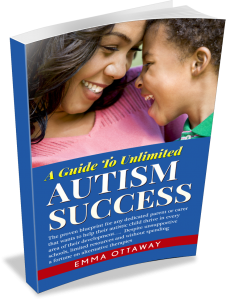Last month a client of mine recommended and kindly lent me the movie “Temple Grandin”
Have you seen it?
Well, first and foremost I have a newfound respect for Claire Danes, the actress who played Temple.
Even though Danes was probably one of my favourite actresses before I’d watched “Temple Grandin” from her unforgettable performance in “Romeo and Juliet” and of course “Homeland”, this movie topped them both for me.
Temple Grandin is a movie based on the true story of an Autistic girl who grew up in 1950’s.
The movie follows her life, her highs, her lows and her amazing success!
(I won’t say anymore as I don’t want to spoil it for you.)
But the way in which Claire Danes captures some autistic behaviours is incredible.
Her facial expressions, tone of voice and her way of thinking is shown so clearly and so precise.
It’s amazing.
The parent that gave me the movie said something brilliant when I asked what she thought of it…
She said “After watching it, I felt a overwhelming mix of utter sadness and undeniable hope.”
After watching it now myself I can totally understand why she said that.
It’s an inspiring story which I’m sure will help you understand autism better and hopefully help you meet your child’s needs better too.
The movie demonstrates beautifully how children with autism think in pictures to make sense of things.

There are lots of great scenes where someone will say something to Temple and to make sense of their words she will think of a picture.
For example when she first met her high school science teacher he told her he’d worked for NASA….
And she instantly thought of him in a NASA uniform with a rocket launching off into space behind him.
Another time her Uncle refers to something (I won’t spoil it for you) as a miracle…
Then Temple thinks of Jesus walking on water and hears heavenly like music in her mind.
Her visual thinking helped her make sense of everyday comments from others.
And this is a technique that’s not unique to Temple, as we’ve learnt after years of research.
So, there are lots of simple ways we can help our autistic children understand the world better, for example…
Put up pictures as a gentle reminder to wash hands after using the toilet.
When teaching new words show your child pictures of the things you’re teaching. This way you’re making sure they know what it is that you’re teaching and making that visual connection.
If you’re asking your child to describe something instead of expecting them to draw upon a memory of what it’s like, give them the object. For example give them an autumn leaf or an ice cube.
Some parents and carers think using visuals takes away the opportunity for the child to use language.
But this doesn’t have to be true.
If you teach the language alongside the visual, the visual is then just an aid rather than a replacement for language.
And when your child has learnt the new word or concept you can fade back and eventually remove the visual reminder.
Anyway, give “Temple Grandin” a watch and I’m sure you’ll pick up lots more ways to help your child with autism.
Good luck!
Speak with you soon until then,
Live every moment, Love beyond words and make a difference today
Emma Ottaway
The Ambitious Autism Ambassador

